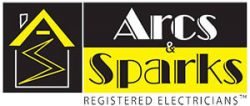Using too many electrical extension leads can indeed pose several dangers, primarily related to overloading the electrical circuit:
- Fire Hazard: Overloading a circuit can generate excessive heat, potentially causing insulation to melt or wires to burn. This increases the risk of electrical fires, which can spread rapidly and cause significant property damage and even loss of life.
- Electrical Shock: Overloaded circuits can cause electrical outlets, switches, and appliances to become hot, increasing the risk of electric shock to anyone who comes into contact with them. This poses a severe danger, especially in homes with children or pets.
- Appliance Damage: Excessive current flowing through extension leads can damage connected appliances and electronic devices. Over time, this can lead to premature failure of the equipment, requiring costly repairs or replacements.
- Tripping Hazards: Using multiple extension leads can create a cluttered and potentially hazardous environment, increasing the risk of trips, falls, and other accidents, particularly in areas with heavy foot traffic.
To mitigate these risks, it’s essential to follow best practices when using extension leads:
- Use extension leads that are appropriately rated for the intended purpose and load.
- Avoid daisy-chaining multiple extension leads together.
- Distribute the load evenly across multiple outlets or circuits.
- Regularly inspect extension leads, plugs, and outlets for signs of damage or wear.
- Unplug unnecessary devices and appliances when not in use to reduce the load on the circuit.
- Consider installing additional outlets or circuits to accommodate the electrical needs of your home or workspace.
By adhering to these guidelines, you can help ensure the safety of yourself, your family, and your property.
For more information contact your local, reliable electrician Arcs and Sparks on 01225 789631




